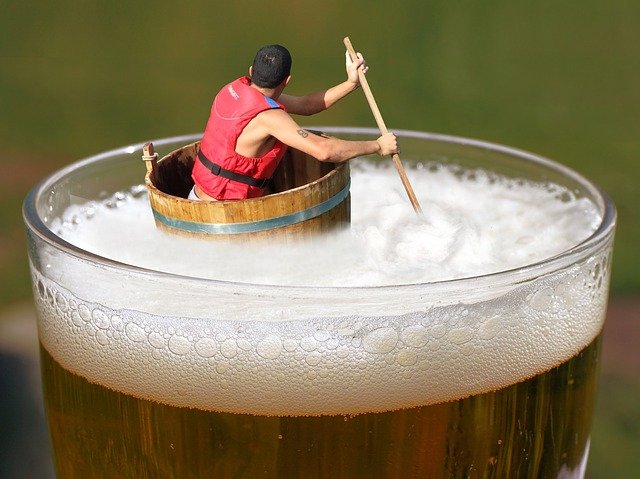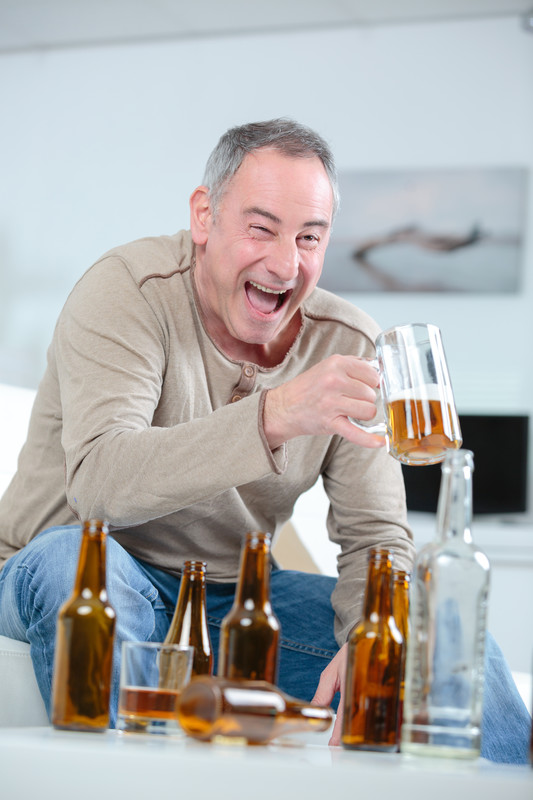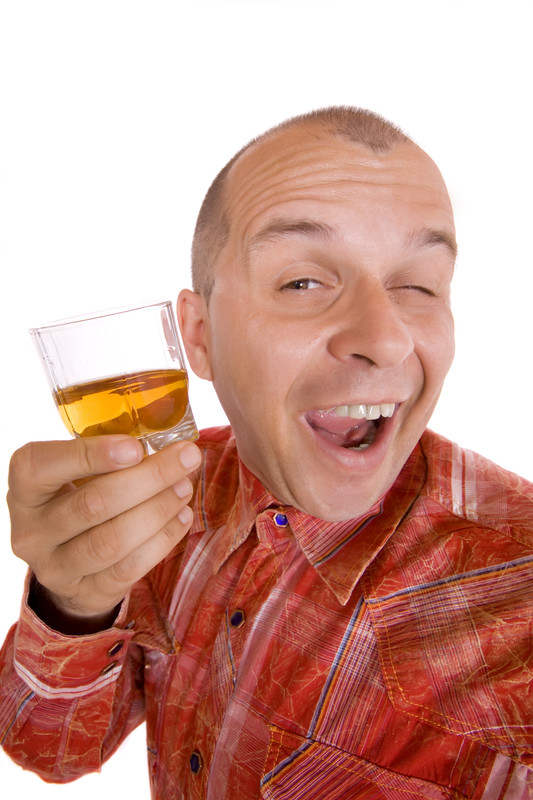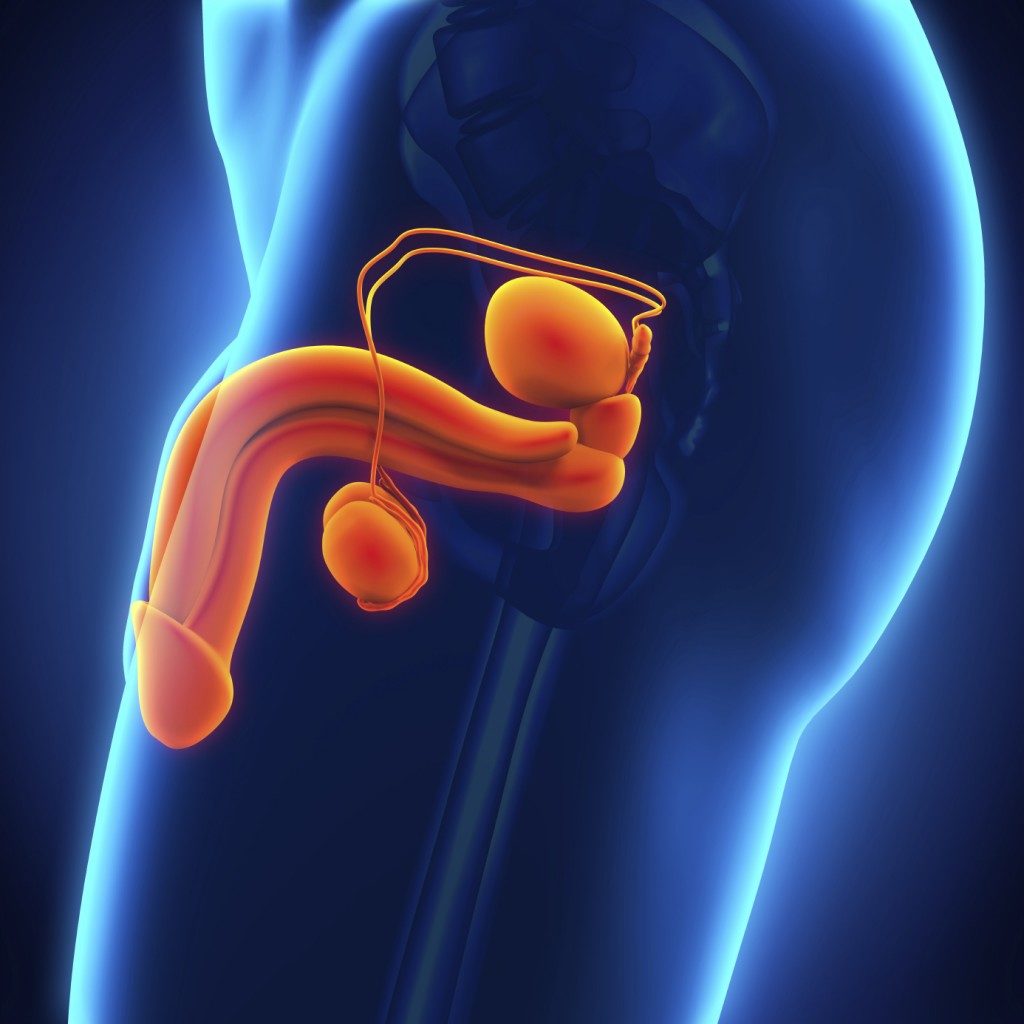(Article medically reviewed by Dr. Zac Hyde M.D)
Is testicular atrophy from alcohol reversible?
Yes it is, according to a study done on a group of hardcore drinkers back in the 80’s.
The men in this study had torched their testicles and drastically lowered their testosterone levels after years of heavy drinking.

As a result, every single one of the subjects suffered from blatant hypogonadism.
A testicular apocalypse situation where hormone production is reduced or stops entirely.
And remember, when your twins stop producing male hormones in normal fashion, your boys are going to shrink, Big Time!
Fortunately…
When the men stopped drinking, their gonads and their male hormones began to quickly recover.
Here’s a quote from the paper…
Our data suggest that ethanol-induced hypogonadism is primary in origin, functional in nature and transient in its evolution (source).
Transient in this case meaning…Not Permanent (whew!)
Now, before we delve into the details in part 2, I want to talk to you men who have no desire to quit drinking.
If you want to keep the party going, without the testicular atrophy penalty you need to follow a couple of rules.
How to Drink Without Damaging Your Testicles
According to most experts, heavy drinking is considered to be more than 15 alcoholic drinks a week.
Moderate drinking is considered by most experts to be 2 drinks a day for men (and 1 for women).
And the data to support these numbers is pretty solid.
For example…
A 2017 study found that heavy drinking had a negative impact on semen volume and sperm morphology.
Moderate drinking did not.
Another study involving healthy 8,344 men is the USA and Europe found that moderate drinking had no impact on semen quality.
Moderate drinkers also had higher testosterone levels compared to the heavy drinkers.
Quote:
Our study suggests that moderate alcohol intake is not adversely associated with semen quality in healthy men, whereas it was associated with higher serum testosterone levels.
So this is good news for men who like booze but have enough self control to stop at 2 drinks.
But what about men who don’t want to stop at 2? And what about events like New Years Eve, your birthday, bachelor parties?
When you go all in at these events your testicles are definitely going to pay a penalty.
But you can minimize the damage by doing the following.
Testicle Safe Drinking (2 Tips)

First:
Get your glow on, then be a master of maintaining your buzz without getting stupid drunk.
This will give your body time to clear the ethanol more efficiently and it will also minimize your hangover the next day.
The achieve this, consume two drinks the first hour, then one drink per hour after that.
And always hydrate between drinks with a non alcoholic drink until it’s time to go again.
Your objective here is to maintain a blood alcohol level between .04 and .06 which will minimize the testicular damage.
And trust me, if you’re hovering around .06 all night you’re going to have a very good time.
And you’ll actually remember most of it the next day.
If you make it a point to always have a drink in your hand, even if it’s non alcoholic, you’ll find it easy to stay in the safety zone.
Second:
The following morning you’ll know if you hit your target if your hangover is minimal.
If it’s not minimal, you clearly spent a significant amount of time with a blood alcohol level over .06.
In this case, you’ll need to do damage control by executing a testicular cooling protocol that morning.
If you’re not familiar with testicular cooling, I’ve written a report on the subject which you can find here (no charge for this report).
Now here’s part 2…
Is Testicular Atrophy from Alcohol Reversible Part 2:
Few word combinations can send shivers down a man’s spine quite like “testicular” and “atrophy.”
The result of prolonged disuse, sexual dysfunction, and – quite often – alcohol abuse, atrophy is indeed a very serious and debilitating condition that affects many men.
But is it reversible?
As you’ll see, medical science is currently trying to answer that question. In this article, we’ll discuss what some of the latest studies have to say about booze’s long-term effect on your boys.
A Brief Overview of Testicular Atrophy
Atrophy is when the testicles are damaged in such a way that there is a loss of both Leydig cells and germ cells.
If you don’t remember from health class, the former produce testosterone, while the latter produce sperm.
Whether this damage is the result of a hormone imbalance, orchiditis, age, a varicocele or other factors, it eventually causes the testicles to shrink in size and suffer major problems with function.
Testicular Damage and Alcohol Abuse
One of the largest studies ever conducted on the topic of alcohol and testicular atrophy was published in the Middle East Fertility Society Journal in 2014 (source).
The primary goal was to study the effects of ethanol exposure on testicular function and morphology, as well as whether or not abstinence could initiate a recovery post-atrophy.
Of course, experiments like these would be highly unethical if humans were involved, so this study used sexually mature rats as the subjects.
In this case, alcohol was administered to one group of animals several times a week for up to two months. The control group, on the other hand, received only distilled water.
After the administration period ended, examination revealed that the alcohol group exhibited a significant reduction in testicular weight, sperm count, and motility, as well as a massive decrease in testosterone levels.
Worst of all?
An analysis of the seminiferous tubules responsible for actually producing sperm showed a significant reduction in size and function.
So, that’s all pretty bad news.
Though the alcohol levels administered to the rats were more frequent and more significant than what you and I might imbibe on a trip to the bar…
It only took eight weeks for the animals to display significant damage, testicular shrinkage, and a loss of sperm count.
Now, as far as recovery goes, let’s start with the bad news.
You see, after the researchers stopped administering the alcohol, the rats still demonstrated low sperm counts and reduced testicular size.
However, both the testosterone levels and the seminiferous epithelium (the tubes that transport oxygen and blood to the testes) showed signs of regeneration.
This is very promising, but remains ultimately inconclusive.
Alcohol Abuse & Testicular Atrophy Studies

A classic 1975 study conducted by researchers in both Pittsburgh and Los Angeles was among the first to examine the link between hypogonadism (the reduction in hormone production) and chronic alcohol use.
As with the later study outlined above, researchers provided one group of animals with an ethanol-rich diet and another with a normal, healthful diet.
Those animals that were repeatedly exposed to ethanol displayed significant testicular atrophy, as well as damage to the seminal vesicles and prostate.
By examining the relatively healthy control group, the scientists were able to zero in on ethanol (and not various other dietary differences) and the primary culprit in this testicular degeneration.
In short: alcohol is a testicular toxin.
This study was the first time that testicular atrophy, a condition that many chronic alcoholics experience was directly tied to the ethanol itself, and not to the byproducts of an alcoholic lifestyle.
Before this, many doctors considered liver disease, impotence, isolation, and a prolonged lack of sex drive to be the primary cause of shrinkage and damage.
Furthermore, it stated that if the germ and Leydig cells continue to be abused, the subject’s testicles would only shrink more and more.
Alcohol and the Human Reproductive System

Back in 1975, Doctors were still recommending different types of cigarettes as being “easier on the throat” than others.
So you can understand that having researchers come out and say that the second-most widely consumed drug (after caffeine) could cause your balls to shrink was a pretty big deal.
Of course, that doesn’t mean that anyone actually listened.
Luckily, countless studies have been done since then regarding alcohol’s effect on the human body – specifically male sexual function.
The results of those studies have only ended up further illustrating just how dangerous alcohol consumption can be – even in lower-than-average amounts.
Here are some of the most important facts:
According to a 2019 study, roughly 50% of heavy drinkers had issues with the formation of their sperm and boasted smaller testicles than non-alcoholics.
Another study, this time in 2017, looked at the drinking habits and sexual health of nearly 17,000 men.
The result?
Heavy drinkers suffered from reduced semen volumes as well as poor semen morphology. The more they drank, the worse their motility and sperm cell formation would be.
All of these sexual side effects are obviously highly problematic for both the men and their sex lives, but what about reproduction?
Since alcohol can impair testicular function, reduce testosterone levels, and impact the quantity and quality of sperm, it’s possible that alcoholic fathers may put their children at risk of a variety of serious congenital disabilities.
For those couples trying to conceive, alcohol use (past and present) suddenly becomes an important consideration.
Is Testicular Atrophy from Alcohol Reversible Conclusion:
As much as we can learn about alcohol’s effects on the human body from these studies, they don’t really answer the “big question.”
That is, can this testicular atrophy and corresponding sexual organ damage be reversed?
In the rodent study we looked at, low sperm counts and small testicle size continued well after the alcohol stopped being administered.
However, testosterone levels and the seminiferous epithelium did start to recover after a while.
Our best answer to this question comes from a 1985 study on hypogonadism and ethanol withdrawal that Mark discussed in Part 1.
It observed a few dozen heavy drinkers who were beginning to withdraw from alcohol use.
Though their testosterone levels were quite low at the beginning of the study, they did start to increase as abstinence continued.
The same was noted in their serum prolactin levels, their luteinizing hormones, and other important signs of testicular function. The more time passed, the more these levels returned to normal.
As you can see, the takeaway here is quite simple.
If you drink regularly and in high amounts, it is virtually impossible to avoid doing serious damage to your testicles.
This includes developing atrophy – which may or may not be permanent.
While not drinking at all is the best solution, following the “two drink” rule whenever you imbibe is also a good idea.
As with anything else, if you want healthy testicles, moderation is essential.
